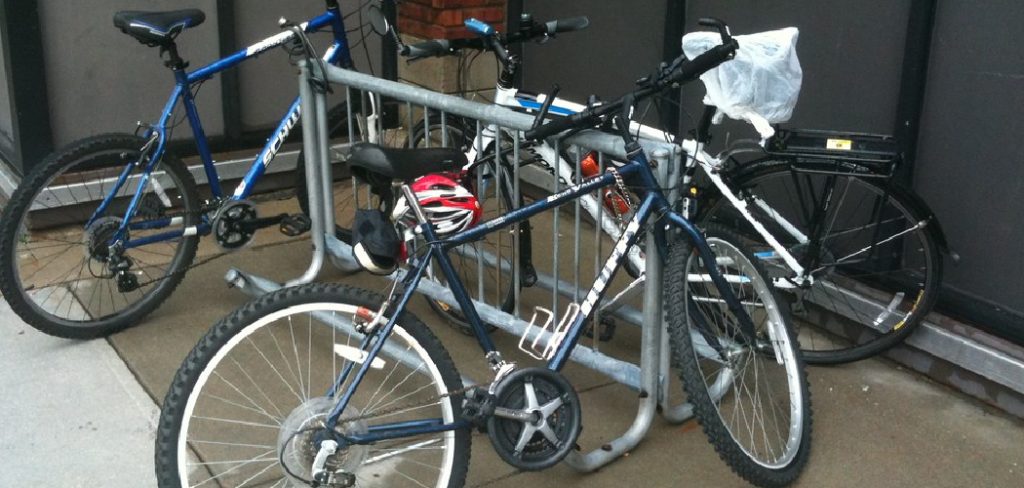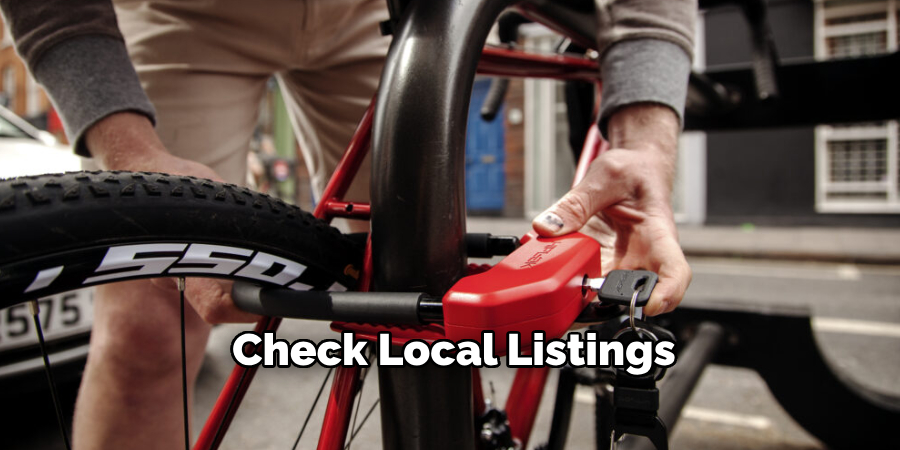Bicycles are not just a means of transportation; they are valuable investments that deserve protection. Unfortunately, bike theft is an all-too-common problem in both urban and suburban areas. Leaving your bike unsecured or using improper locking techniques significantly increases the risk of it being stolen. Thieves often target hastily or poorly-locked bikes, making it crucial to understand the importance of proper security measures.

This article provides a comprehensive step-by-step guide on how to lock a bike securely, ensuring that you minimize the risk of theft and keep your bike safe. By following these practices, you can confidently leave your bike unattended without constantly worrying about its safety. Whether you’re a casual cyclist or a daily commuter, proper bike security is an essential practice to protect your investment and enjoy peace of mind.
Choosing the Right Bike Lock
Selecting the right bike lock is crucial for ensuring your bike’s security, especially in areas prone to theft. Different bike locks offer varying levels of protection and flexibility, so choosing one that suits your needs is important.
Types of Bike Locks
- U-Locks: Strong and durable, U-locks are highly resistant to cutting tools and are ideal for urban areas with frequent bike theft. Their rigid design makes them difficult to tamper with, providing a high level of security.
- Chain Locks: These heavy-duty locks are highly effective in high-theft areas. Their flexibility allows them to secure your bike to larger or irregularly shaped objects, but their weight might be a drawback.
- Cable Locks: Lightweight and flexible, cable locks are easy to carry and use but offer less security compared to other options. They are better suited for low-risk areas.
- Folding Locks: Compact and versatile, folding locks are a great middle ground for medium-security needs. Their design makes them easy to transport and use.
Features to Look For
- Hardened Steel Construction: Essential for resistance against bolt cutters and other tools.
- Anti-Pick and Anti-Drill Mechanisms: Prevent tampering and enhance overall lock reliability.
- Weather-Resistant Coating: Protects the lock from rust and damage in various conditions.
Lock Ratings
To gauge a lock’s reliability, look for Sold Secure ratings. These ratings—Gold, Silver, and Bronze—indicate security levels, with Gold offering the highest protection. Investing in a top-rated lock is a wise decision for safeguarding your bike.
How to Lock a Bike Securely: Best Locking Techniques
Secure the Frame and Wheel
Always lock your bike through the frame and at least one wheel. This ensures that the most valuable parts of your bike are secured. Avoid locking only the wheel, as it can be easily removed, leaving the rest of your bike vulnerable to theft.
Positioning the Lock
When using a lock, keep it off the ground. A lock resting on the ground is easier for thieves to break using leverage. Additionally, try to fill the U-lock’s interior space as much as possible with the bike frame, wheel, and secure structure you’re locking to. This reduces the chance of prying tools fitting inside the lock.

Double Locking for Extra Security
For added peace of mind, consider using a second lock. By using two locks—such as pairing a U-lock with a heavy-duty chain—you can secure both wheels and the bike frame. This makes your bike an extremely unattractive target for thieves, as it takes considerably more time and effort to break through two types of locks.
Locking to Secure Structures
Always choose solid, immovable structures for locking your bike, such as designated bike racks or sturdy metal posts. Ensure that the structure cannot be easily cut, broken, or moved. Avoid thin poles or trees, as these offer little resistance to determined thieves armed with cutting tools. A secure locking technique is only as good as the object you lock your bike to.
Common Mistakes to Avoid
Locking Only the Front Wheel
One of the most common mistakes is locking only the front wheel. Many thieves can quickly detach the front wheel and make off with the rest of the bike, leaving you with nothing but the wheel itself. Always use a locking method that secures both the frame and at least one wheel.
Using Low-Quality Locks
Relying on low-quality locks, such as cable locks alone, is another frequent error. Cable locks are easily cut with basic tools, offering minimal resistance to theft. Invest in high-quality U-locks or heavy-duty chain locks for better protection.
Leaving Slack in the Lock
Leaving too much slack in your lock can make your bike more vulnerable. Loose locks can be pried open with leverage tools, giving thieves an easy way to break through. Ensure your lock is snugly secured around the bike and locking point.
Locking to Unstable Objects
Avoid locking your bike to thin signposts, old wooden fences, or any other unstable structures. These objects can be easily broken, cut, or even lifted from the ground, exposing your bike.
Leaving Accessories Unsecured
Forgetfulness can also lead to the theft of removable accessories like lights, saddles, or panniers. Always remove or properly secure these items whenever you leave your bike unattended.
Securing Your Bike at Different Locations
Urban Areas
When parking in urban areas, it’s vital to use heavy-duty U-locks or chain locks to secure your bike. Choose a well-lit and busy location where potential thieves are less likely to act unnoticed. Avoid isolated or poorly lit areas, as they can become easy targets for theft. If possible, lock your bike to a sturdy, immovable object, securing the frame and wheels.
Home Storage
Even at home, taking additional precautions to secure your bike is necessary. Consider installing a ground anchor or a wall-mounted lock in your garage, shed, or storage space. These provide an added layer of security by attaching your bike to a fixed structure. Covering your bike or keeping it out of view from windows can significantly reduce its visibility and deter potential thieves from targeting your property.
Public Bike Racks

Using designated public bike parking with sturdy racks is always the best option when out and about. Avoid flimsy or makeshift locking locations that can easily be compromised. If practical, try not to leave your bike overnight at public racks, as this increases the risk of theft. Ensure your lock secures the frame and at least one wheel.
At Work or School
Look for indoor bike storage facilities for workplaces or schools if they’re available. These often provide enhanced security features and protection from the elements. If you must park in a high-traffic outdoor area, consider using multiple locks to secure various parts of your bike, such as the frame, wheels, and even the saddle if it’s removable. Combining these measures will help ensure that your bike stays safe in different environments.
Tips for Increasing Bike Security
Use Multiple Locks
Thieves often avoid bikes that require extra effort to steal. Using multiple locks, such as a sturdy U-lock and a cable lock, can secure various parts of your bike, like the frame and wheels. This added layer of protection makes your bike less attractive to potential thieves.
Register Your Bike
Take advantage of local or national bike registration services. These services log essential details like the bike’s serial number, brand, and unique identifiers. If your bike is stolen, a registration can significantly increase the chances of recovery by helping authorities track it.
Personalize Your Bike
Adding unique markings or stickers to your bike makes it recognizable and discourages theft. Customizations that are noticeable can deter thieves because a personalized bike is harder to sell without attracting suspicion.

Use GPS Trackers
Consider attaching a hidden GPS tracking device to your bike. These devices allow you to monitor your bike’s location in real time and can be invaluable for recovering it if it gets stolen.
Routine Maintenance of Locks
Proper care for your locks is essential to keep them in good working order. Regularly lubricate them to prevent mechanical failure and rust, especially if you frequently park your bike outdoors. This will ensure your security measures stay reliable over time.
What to Do If Your Bike Is Stolen
Discovering that your bike has been stolen can be distressing, but taking prompt action increases your chances of recovery.
Report to the Police
Immediately report the theft to your local police department. Provide essential details such as the make, model, color, and serial number of your bike. Photos or unique identifying marks can also help in their investigation efforts.
Check Local Listings

Keep an eye on local online marketplaces such as Craigslist, Facebook Marketplace, or auction sites where stolen bikes are often resold. Regularly search for listings that match your bike’s description.
Notify Local Bike Shops
Inform your nearby bike shops about the theft and provide them with photos and details. Many shops are vigilant and might recognize your bike if someone brings it in for repairs or attempts to sell it.
Post on Social Media
Social media and community forums can be powerful tools. Share photos and descriptions of your stolen bike in local cycling groups, neighborhood apps, or citywide networks, rallying others to help keep an eye out.
File an Insurance Claim
If your bike is covered by insurance, contact your provider to file a claim. Provide all necessary paperwork, including the police report, to facilitate the process and potentially receive compensation for your loss.
Maintaining Your Bike Lock
Proper maintenance of your bike lock is essential to ensure its longevity and effectiveness in deterring theft.
Regular Cleaning
Routine cleaning helps prevent dirt and debris from accumulating, which can cause the lock mechanism to jam. Use a soft cloth or brush to clean the lock regularly, especially after exposure to rain or dust.
Lubrication
A graphite or silicone-based lubricant keeps the lock’s moving parts operating smoothly. Avoid using oil-based products, as they can attract more dirt and grime over time.
Inspect for Damage
Regularly check your lock for signs of wear, rust, or tampering. Identifying potential vulnerabilities early can prevent more significant issues later.
Replace Faulty Locks
If your lock begins to show signs of significant rust, cracks, or mechanical weakness, it’s time to replace it. Upgrading to a sturdier, higher-quality lock will ensure better security and peace of mind for your bike.

Conclusion
Securing your bike effectively requires choosing the right lock and applying proper techniques. A sturdy lock, combined with consistent maintenance and vigilance, serves as your first line of defense against theft. Remember, even the best locks are not foolproof, so staying alert and proactive is critical. To enhance protection, consider registering your bike and using tracking devices as additional safeguards. By learning “how to lock a bike securely” and combining physical security with advanced measures, you can significantly reduce the risk of theft and enjoy greater peace of mind. Protect your investment with smart strategies!

